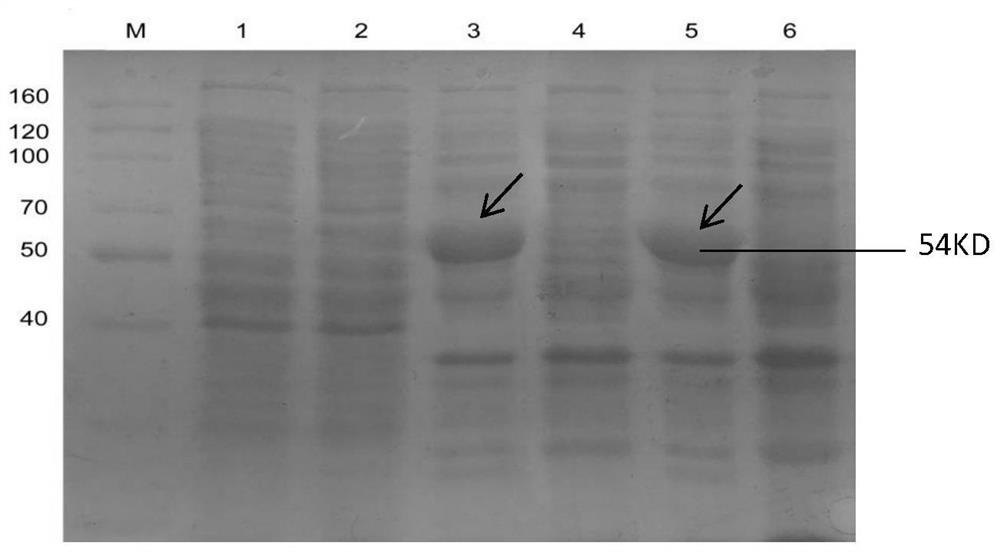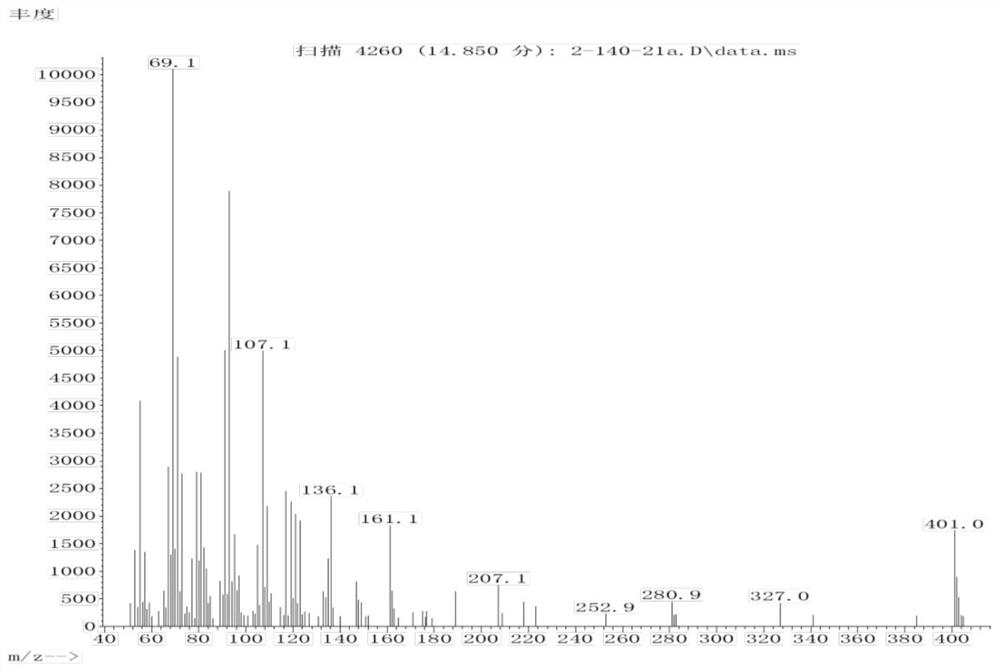Aquilaria sinensis terpene synthase
A technology for sesquiterpenes and compounds, which is applied in the field of terpenoid synthases of serrata, can solve the problems of staying, not reaching industrialized production, and many impurities, and achieves a corresponding high yield, high-efficiency catalytic activity, and broad industrial practical prospects. Effect
- Summary
- Abstract
- Description
- Claims
- Application Information
AI Technical Summary
Problems solved by technology
Method used
Image
Examples
Embodiment 1
[0052] Embodiment 1, recombinant expression of sesquiterpene synthase
[0053] Step 1. Synthesize the modified sesquiterpene synthase gene shown in SEQ ID No.1 or SEQ ID No.3 by whole gene synthesis, connect it to the pET-28a vector, and identify it by sequencing and double enzyme digestion Extract plasmids for correct clones for later use.
[0054] Step 2: The recombinant plasmid identified as positive was transformed into Escherichia coli Transetta (DE3) competent cells, and the PET-21a empty plasmid was also transformed into Escherichia coli Transetta (DE3) competent cells as a control.
[0055] Step 3: After the bacteria are picked and activated, transfer a large number of shaken bacteria so that the initial OD value is lower than 0.1, and measure the OD value with an ultraviolet spectrophotometer. Shake the bacteria at 37°C and 200rpm for 2h and 40min, add 0.5mM IPTG when the OD value rises to about 0.5, then induce at 16°C and 150rpm for 16h, then centrifuge at 12000rpm...
Embodiment 2
[0057] Embodiment 2, the purification of sesquiterpene synthase
[0058] According to the established induction conditions, the protein is expressed in large quantities.
[0059] Step 1: Centrifuge at 5000rpm for 20min to collect the cells for the next step of affinity purification.
[0060] Step 2: Resuspend the cells with 40 mL binding buffer (containing protease inhibitors), and sonicate. Centrifuge at 8000r / min at 4°C for 30min, filter the supernatant with a 0.45μm filter, and store the precipitate on ice for later use.
[0061] Step 3: Take 1mL Ni-NTA His Bind resin, equilibrate it with binding buffer, add it to the filtered supernatant, mix the filtered supernatant with 1mL Ni 2+ The resin homogenate was mixed and combined on ice for 4h.
[0062] Step 4, put the above mixture on the column and let the solution flow out.
[0063] Step 5. Wash the resin with washing buffer, 10 mL each time, repeat 3 times.
[0064] Step 6: Elute the target protein with elution buffer,...
Embodiment 3
[0068] Embodiment 3, the in vitro enzymatic reaction of sesquiterpene synthase
[0069] The reaction system contained 25mM Tris-HCl (pH7.0), 10% glycerol, 100mM Mg2SO4, 5mMDTT, 46uMFPP or GPP (purchased from sigma company), 50uL of purified protein, and ddH2O to make up to 200μL. After mixing the above solution, put it in a metal bath at 30°C for 1h.
PUM
 Login to View More
Login to View More Abstract
Description
Claims
Application Information
 Login to View More
Login to View More - R&D
- Intellectual Property
- Life Sciences
- Materials
- Tech Scout
- Unparalleled Data Quality
- Higher Quality Content
- 60% Fewer Hallucinations
Browse by: Latest US Patents, China's latest patents, Technical Efficacy Thesaurus, Application Domain, Technology Topic, Popular Technical Reports.
© 2025 PatSnap. All rights reserved.Legal|Privacy policy|Modern Slavery Act Transparency Statement|Sitemap|About US| Contact US: help@patsnap.com



